| Published in Attractions / Places of Interest |
Rinpung Dzong, Bhutan
Drukpa Kagyu Lineage, 17th century, about 200 monks.
A “dzong” is a traditional Bhutanese fortress-monastery, that in the past served as a stronghold against enemies. Rinpung Dzong belongs to the Drukpa Lineage of the Kagyu school in Paro District.
It houses the district Monastic Body and government administrative offices of Paro Dzongkhag. It is listed in Bhutan's Tentative List for UNESCO inclusion.
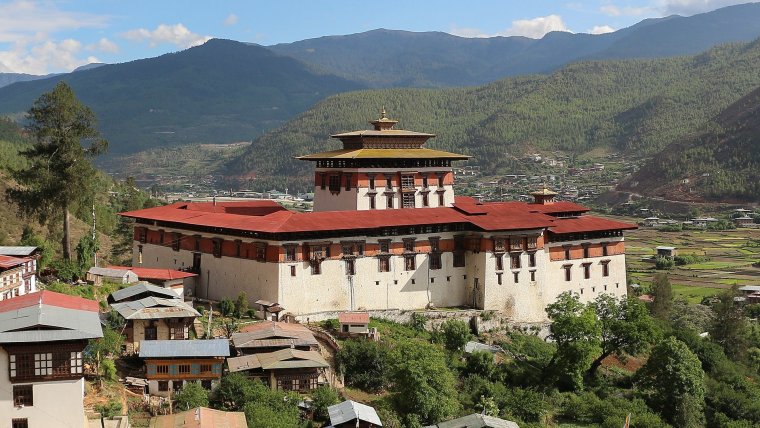
Rinpung Dzong, Bhutan. Photo: Bernard Gagnon, Wikipedia.
Location
Rinpung Dzong is located on bank of Paro Chuu, three kilometers from the town of Paro and six from Paro International Airport.
History
In the 15th century local people offered the rugged cliff of Hungrel at Paro to Lama Drung Drung Gyal, a descendant of Pajo Drugom Zhigpo. Drung Drung Gyal built a small temple there and later a five storied Dzong or fortress which was known as Hungrel Dzong.
In the 17th century, his descendants offered this fortress to the Drukpa hierarch, Ngawang Namgyal, the Zhabdrung Rinpoche, in recognition of his religious and temporal authority.
In 1644 Zhabdrung Rinpoche dismantled the existing dzong and laid the foundations of a new one. In 1646 the dzong was reconsecrated and established as the administrative and monastic center of the western region of Bhutan and it became known as "Rinpung Dzong."
In 1905 the monastery was destroyed by fire, but was repaired in 1908 to 1909 to its original state by Penlop Dawa Penjor (first cousin of First King of Bhutan) with the addition of statues of Guru Rinpoche, Buddha and Zhabdrung Rinpoche.
Features
Rinpung Dzong monastic quarters accommodate about 200 monks. Inside are fourteen shrines and chapels:
• Kungarwa
• Monks' assembly hall
• Sandalwood Stupa
• Protector's shrine
• Temple of the Guru's Eight Manifistations
• Chapel of the head lama
• Chapel of Amitayus
• The Clear Crystal Shrine
• Chapel of the Eleven-faced Avalokiteśvara
• Apartments of the Abbot
• Chapel of Akshobhya
• Temple of the Treasure Revealer
• Apartments of the King (Gyalpo'i Zimchung)
• Temple of the Bursar
• Outside the main dzong is the Deyangkha Temple.
On the hill above Rinpung Dzong is a seven-storied watchtower fortress or Ta Dzong built in 1649. In 1968 this was established as the home of the National Museum of Bhutan.
Festivals
Tshechu annual festival is held at Rinpung Dzong from the eleventh to the fifteenth day of the second month of the traditional Bhutanese lunar calendar (usually in March or April). On this occasion, holy images are taken in a procession. This is followed by a series of traditional mask dances conveying religious stories which are performed by monks for several days.
Before the break of dawn on the morning of the fifteenth day, a great sacred thongdrel banner depicting the Eight Manifestations of Padmasambhava is displayed for the public.1
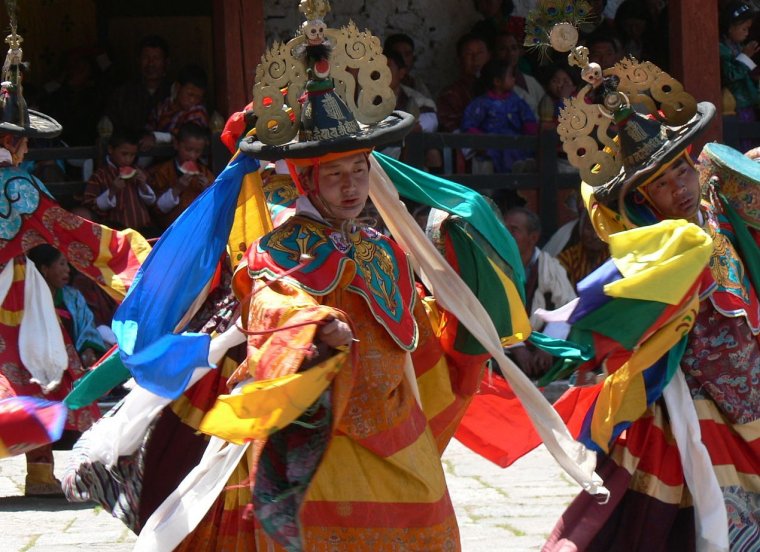
Paro Tsechu festival of dances. Photo: Stephen Shephard, Wikipedia
Travel and Visiting
Rinpung Dzong is three kilometers from the town of Paro and six from Paro International Airport. Paro Airport is well-connected with Kathmandu, Kolkata, New Delhi, Thailand, Singapore, and some other cities in India during the peak season.
The monastery is open for visiting 8AM to 4:30PM, from November to February, and 8AM to 6PM from March to October.
Summers are rainy and winters are cold in Bhutan. The best months to visit are March to May and September to November.
An important custom to follow is to walk in clockwise fashion around the shrines, chapels, and prayer wheels. Photography is allowed inside the dzong, except in the prayer and assembly halls.
Sources
• https://en.wikipedia.org/wiki/Rinpung_Dzong
• https://www.drukasia.com/bhutan/paro/paro-dzong/
Footnotes
1. A Thongdrel is a large embroidered thangka normally only unveiled during tsechu, the main religious festivals in Bhutan. They are the largest form of thangka paintings in the tradition of Tibetan Buddhism. Thongdrels typically depict a seated Guru Rinpoche surrounded by holy beings.
Thongdrels are composed of several layers, mostly of silk. These begin with a backing, then the image itself, made up of appliqué pieces sewn to a background. Finally, there is a yellow drape that covers and protects it when not on display. Thongdrels are stored rolled up.
Thongdrels are displayed once a year as the highlight of the tsechu festival of a district or dzongkhag (although not every district has a thongdrel). Typically, they are displayed on the last day of the tsechu. The painting is not allowed to be struck by the direct rays of the sun; thus it may be unfurled at around 3:00 in the morning and rolled back up by 7:30 AM.
The mere viewing of the unfurled thongdrel is said to cleanse the viewer of sin. They may also be exhibited at other important occasions such as royal coronations, when the thongdrel from several monasteries may be transported to appear.
YOU MAY ALSO LIKE
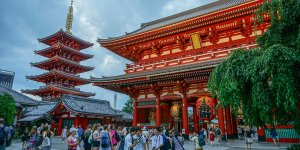
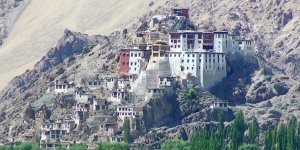
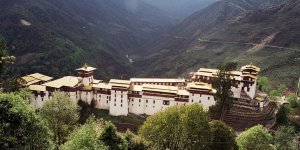

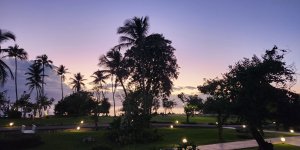

 If you own or manage a travel-related business such as a hotel, a bed-and-breakfast, a restaurant, a pub or a cafeteria, you can create a web page for your business for free on Titi Tudorancea Travel Info. » |
